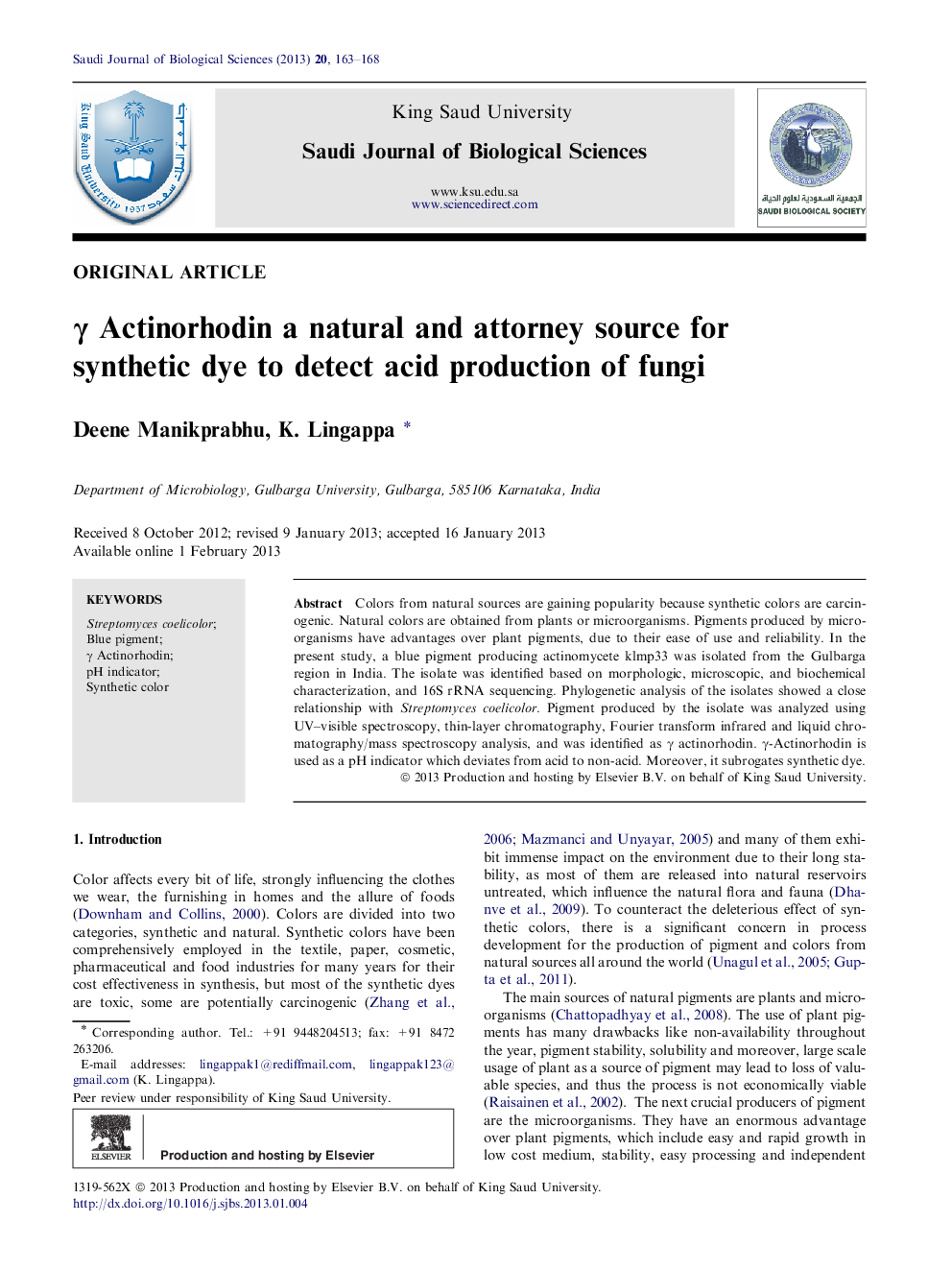| کد مقاله | کد نشریه | سال انتشار | مقاله انگلیسی | نسخه تمام متن |
|---|---|---|---|---|
| 4406502 | 1618690 | 2013 | 6 صفحه PDF | دانلود رایگان |

Colors from natural sources are gaining popularity because synthetic colors are carcinogenic. Natural colors are obtained from plants or microorganisms. Pigments produced by microorganisms have advantages over plant pigments, due to their ease of use and reliability. In the present study, a blue pigment producing actinomycete klmp33 was isolated from the Gulbarga region in India. The isolate was identified based on morphologic, microscopic, and biochemical characterization, and 16S rRNA sequencing. Phylogenetic analysis of the isolates showed a close relationship with Streptomyces coelicolor. Pigment produced by the isolate was analyzed using UV–visible spectroscopy, thin-layer chromatography, Fourier transform infrared and liquid chromatography/mass spectroscopy analysis, and was identified as γ actinorhodin. γ-Actinorhodin is used as a pH indicator which deviates from acid to non-acid. Moreover, it subrogates synthetic dye.
Journal: Saudi Journal of Biological Sciences - Volume 20, Issue 2, April 2013, Pages 163–168